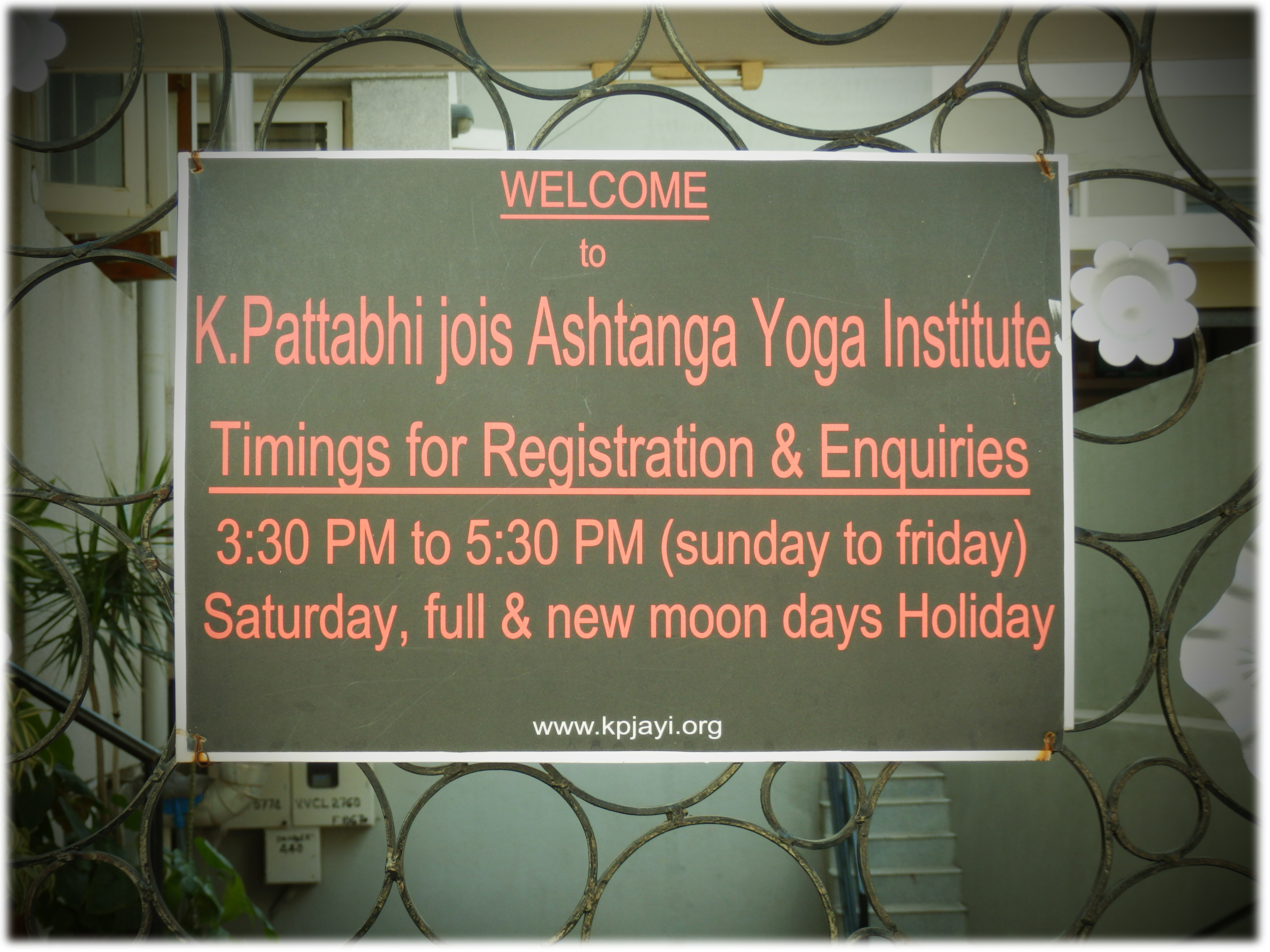

Ashtanga Yoga can be considered tbe the actualisation of the
"8 Limbed" Ashtanga Yoga
as set out in the
Yoga Sutras of Patanjali.
The method was taught to the late
Vidwan Yogacharaya Shri K. Pattabhi Jois
by modern Yoga master
Shri T. K. Krishnamacharya.
The name
"Ashtanga Vinyasa Yoga"
is often used to describe the postural Yoga method
and some maintain it is distinct from Patanjali Yoga. The late Vidwan Yogacharaya Shri K. Pattabhi Jois
was unequivocal in dispelling this notion stating emphatically
"Ashtanga Yoga is Patanjali Yoga".
Shri R. Sharath Jois teaches that the practice comprises the first 4 Limbs of Ashtanga Yoga:
Yama, Niyama, Asana, Pranayama
Yama and Niyama are incorporated into daily life and practiced throughout the day.
Pranayama is taught after steadiness in Asana has been attained.
The visible practice (that may be observed "on the mat") comprises Asana (and eventually Pranayama).
However the unseen bulk of the practice ongoing throughout the day (both on and off the mat) consists of Yama and Niyama.
In Sri R. Sharath Jois' words
"Asana is the foundation but it is not the end of Yoga, it is just the beginning of Yoga".
Within the context of Ashtanga Yoga if the first 4 limbs of Patanjali Yoga:
Yama, Niyama, Asana, Pranayama
are practiced according to the correct method then the final 4:
Pratyahara, Dharana, Dhyana, Samadhi
arise sponateneously for the practitioner.
The name "3 Method Space" is a reference to the principle of Tristhana that characterises Ashtanga Yoga. Tristhana is a sanskrit word interpreted as the three places of attention or action of the Ashtanga Yoga practice. These are Breath, Asana and Drishti.
Within the dynamic system of the Ashtanga method of Yoga an Asana is not a single static posture. Instead it
comprises a pre-determined sequence of movements. Each movement is itself an asana allocated a single specific breath
either an inhalation or exhalation. A coupling of breath and movement is known as a Vinyasa
(a Sanskrit word meaning to place in a special way) with one particular Vinyasa considered
the state of the Asana.
A practitioner may stay in the state of the Asana for as many full breaths (a full breaths an inhalation and an exhalation) as required to receive the
benefit of the Asana.
For most practitioners this is generally between 5 and 8 breaths however it is considered useful to take more breaths in the state of the Asana
if an Asana is found challenging.
Each Vinyasa in the sequence of an Asana is associated with a number (traditionally counted in Sanskrit) ordering it within the sequence.
Every Vinyasa is also allocated a specific Drishti and the sequence for an Asana begins and ends with
Samasthitihi.
For example the Asana Surya Namaskar 'A' has 9 Vinyasa with the state of the Asana being the 6th Vinyasa –
Adho Mukha Svanasana
(Downward Facing Dog).

The 5th Book of
The Ramayana -
The Sundarakanda
tells of the
Arishadvargas, 6 passions or "inner enemies" clouding the mind obscuring the
Divine Light reinforcing the shackles of
Samsara:
• Kama - Lust
• Krodha - Anger
• Lobha - Covetousness
• Moha - Delusion
• Mada - Pride
• Matsarya - Jealousy
Guruji called these the
6 Poisons surrounding the heart
and said that the purifying effects of the
correct method removes them allowing the Divine Light to shine through.
The practice of Ashtanga Yoga includes many exquisite Asana whose outward beauty belies their deeply beneficial therapeutic effects. In this method the states of Asana can seen as flowers interspersed with the beads of the Vinyasa, both thread upon the string of the breath whose the ends join at Samasthiti creating a transformational garland or mala of Yoga.
“Vina Vinyasa Yogena asanadih na karayet”
"O yogi, do not do asana without Vinyasa"
Vamana Rishi